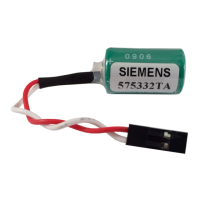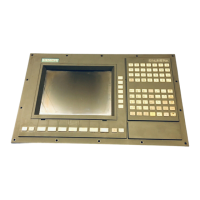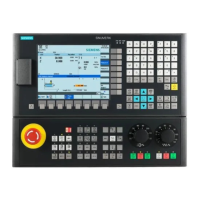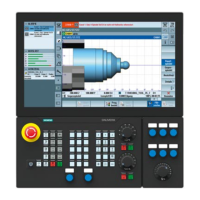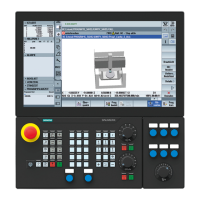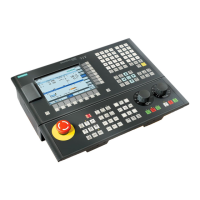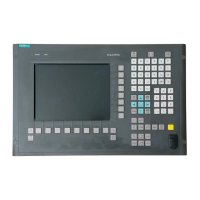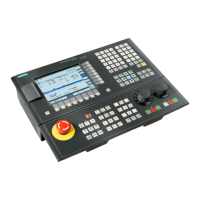Special Motion Commands
5.5 Polynomial interpolation (POLY, POLYPATH)
Job planning
5-20 Programming Manual, 03/2006 Edition, 6FC5398-2BP10-1BA0
3/
<
;
5HVXOWLQ;<SODQH
By assigning concrete values to these coefficients, it is possible to generate a wide variety of
curve shapes such as line, parabola and power functions.
For setting the coefficients a
2
= a
3
= 0 or a
2
= a
3
= a
4
= a
5
= 0 yields, for example, a straight
line with:
f(p) = a
0
+ a
1
p
The following settings apply:
a
0
= axis position at the end of the preceding block
a
1
= difference between axis position at the end of the definition range (PL) and the start
position
It is possible to program polynomials without the POLY G code being active. In this case,
however, the programmed polynomials are not interpolated; instead the respective
programmed endpoint of each axis is approached linearly (G1). The polynomial interpolation
is then activated by programming POLY.
Also, if G code POLY is active, with the predefined subroutine POLYPATH (...), you can
select which axes are to be interpolated with polynomial.
Special features of the denominator polynomial
Command PO[]=(…) can be used to program a common denominator polynomial for the
geometry axes (without specification of axes names), i.e. the motion of the geometry axes is
then interpolated as the quotient of two polynomials.
With this programming option, it is possible to represent forms such as conics (circle, ellipse,
parabola, hyperbola) exactly.
Example:
POLY G90 X10 Y0 F100 ;Geometry axes traverse
linearly to position X10, Y0
PO[X]=(0,–) PO[Y]=(10) PO[]=(2,1) ;Geometry axes traverse along
quadrant to X0, Y10

